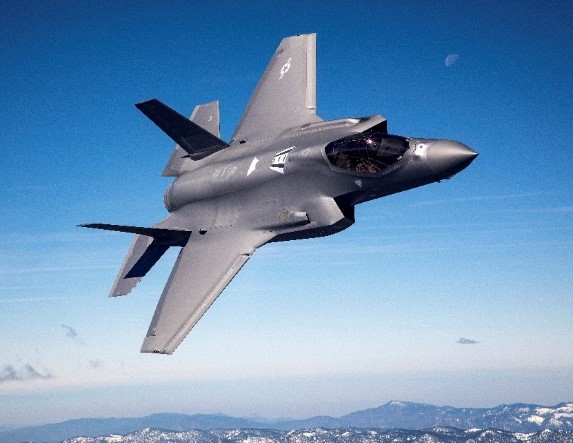- Home
- News and events
- Latest Releases
- Fact Sheet: F-35A Fighter Aircraft
Fact Sheet: F-35A Fighter Aircraft
28 February 2024
This article has been migrated from an earlier version of the site and may display formatting inconsistencies.
Background
The F-35A acquisition is part of MINDEF/SAF's long-term strategy to build up the Republic of Singapore Air Force (RSAF)'s future fighter fleet, which will comprise a diversified fleet of F-35As, F-35Bs and F-15SGs to meet our operational requirements. Common to all F-35 variants are its stealth capabilities and advanced sensor suite. The F-35As and F-35Bs have their own unique capabilities that will complement each other to achieve an optimal next-generation fleet for the RSAF, following the drawdown of the F-16s from mid-2030s. Operating both variants will allow the RSAF to better meet our range of operational needs and maintain a strong fighter fleet to safeguard Singapore's skies.
Capabilities of the F-35A Aircraft
The capabilities of the F-35A are as follows:
Greater Endurance and Payload Capacity. The F-35A – the Conventional Take-Off and Landing (CTOL) variant, has a higher internal fuel capacity, allowing it to have greater endurance as compared to the B-variant. Without the need for a lift fan which is present in the F-35B to provide the Short Take-off and Vertical Landing (STOVL) capability
, the F-35A is able to carry payloads of higher capacity, thereby complementing the F-35B, and providing the RSAF with greater flexibility to meet our operational needs.
Stealth. Common to all F-35 variants, the F-35A is equipped with low observable stealth technology to enable it to evade enemy detection and operate undetected in contested environments. Aerodynamically, its aligned edges, reduced engine signature, internal carriage of weapons and fuel, and embedded sensors contribute to its stealth performance.
Advanced Sensor Suite. Common to all F-35 variants, the F-35A is equipped with advanced sensors and communications suites that allow the drawing of information from on-board sensors to create a single integrated air situation picture, thereby enhancing situational awareness and survivability. It can share such information, providing unprecedented situational awareness to friendly assets to enhance the survivability and lethality of SAF forces.

Photo Credit: Lockheed Martin
Technical Specifications of the F-35A
Table caption
Engine | F135-PW-100 |
|---|---|
Length | 15.7m / 51.4ft |
Height | 4.38m / 14.4ft |
Wingspan | 10.7m / 35ft |
Wing Area | 42.7m2 / 460ft2 |
Horizontal Tail Span | 6.86m / 22.5ft |
Internal Fuel Capacity | 8,278kg / 18,250lb |
Speed | Mach 1.6 (~1,200mph) |
Range | > 2,200km / 1,200nm |
Weapon Payload | 8,160kg / 18,000 lbs |
Weapons | AIM-120 air-to-air missiles AIM-9 air-to-air missiles Small Diameter Bomb (SDB) Joint Direct Attack Munition (JDAM) Paveway Laser Guided Bombs |
Sensors | Active Electronically Scanned Array (AESA) radar Distributed Aperture System (DAS) Electro-Optical Targeting System (EOTS) Advanced electronic warfare suite |
[1]The F-35B’s STOVL capability allows the aircraft to take off in very short distances and perform vertical landing on areas smaller than conventional runways.
More Resources
Fact Sheet: F-35B Fighter Aircraft
Infographic: The RSAF's Future Fighter Aircraft Fleet
Speech by Minister for Defence, Dr Ng Eng Hen, at The Committee of Supply Debates 2024
